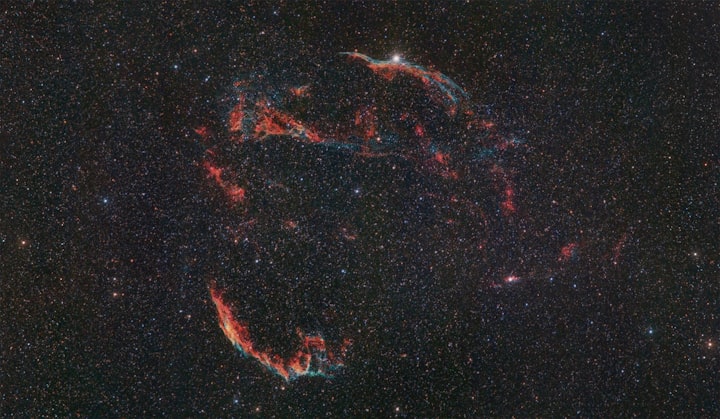RICHES IN SPACE
The ten decillion carat diamond found in space

Let's dive into the intriguing world of weird stars and unravel their mysteries. We'll explore some fascinating celestial objects that defy our expectations and challenge our understanding of the universe.
First, let's talk about a star in the Centaurus constellation, affectionately nicknamed "Lucy in the Sky with Diamonds" after the Beatles song. This star is like a real-life Beatles song because it contains a massive diamond at its core. Estimated to be about 10 billion trillion trillion carats, this diamond puts all the riches on Earth to shame. To put it into perspective, the renowned Hope Diamond, one of the largest diamonds on Earth, is just 45.5 carats in comparison. However, don't get too excited about owning this diamond, as its immense size would likely depress the value of the diamond market. It's fascinating to note that despite its enormous mass, this diamond star is incredibly dense. Its core, only a third the diameter of Earth, crams the mass of the Sun into a compact object. Despite its size, it remains relatively cool with a core temperature of about 12,000 degrees Fahrenheit, in contrast to the Sun's core temperature of approximately 27 million degrees Fahrenheit. Other crystallized stars with diamond hearts, some the size of Earth, have also been discovered, showcasing the universe's endless surprises and treasures.
Moving on, let's talk about Vega, also known as Alpha Lyrae. Vega is one of the brightest stars in the night sky, visible to the naked eye from most parts of the world. While it may appear as a beautiful bright star, it has a hidden secret—it's squashed! Vega's high spin rate causes it to bulge at the equator, resembling a cosmic belly. Rotating once every 12.5 hours, it throws material out around its waistline, almost like it's hula-hooping. Due to the distance between the material and the star's center, it experiences less gravity, cools, and darkens, resulting in a gravity darkening effect. Although Vega may seem round to us observers on Earth's pole end, viewing it from a different angle would reveal its squashed shape. It's a fascinating and captivating star, despite its equatorial waistline.
Now, let's explore supernovas, the grand finales of stars reaching the end of their life cycle. Supernovas release an incredible amount of energy in a few seconds, surpassing the total energy output of our Sun throughout its entire lifetime. One peculiar supernova is the celestial object named iPTF 14hls. This star made a blast in 2014, started to fade away, but then made an unexpected comeback, brightening once more. It continued to fade and brighten at least five times in total, resembling a cosmic yo-yo. What makes it even more mysterious is that its spectrum evolves ten times slower than other stars. It's like a supernova that enjoys its golden years, not conforming to the usual patterns we observe. This enigmatic star's behavior remains a captivating mystery.
Let's now introduce another peculiar star named My Camelopardalis. At first glance, it appears to be a common star, but astronomers have discovered that it's actually two stars in one. These two stars orbit each other at an astonishing speed of over 600,000 miles per hour, so close that they share a common envelope. Essentially, they're smooching stars, a contact binary star system. They are among the most massive known binary stars, with each star weighing an impressive 32 and 38 solar masses, respectively. Astronomers suspect that they might be on the verge of a stellar merger, potentially combining into one giant superstar. The celestial romance of My Camelopardalis showcases the captivating relationships stars can form.
Now let's turn our attention to HD140283, also known as Methuselah's star, located in the Libra constellation. This star has been around for a mind-boggling 14.8 billion years, making it one of the oldest known stars. Initially, scientists believed it was older than the universe itself, but further research corrected this estimation. Nonetheless, its age still makes it a peer of our universe, witnessing the early stages of the Milky Way galaxy. Despite its ancient existence, Methuselah's star is not yet done. It's just beginning to expand into a red giant, undergoing changes that remind us of aging gracefully.
Finally, we come to Tabby's Star, which was originally named WTF Star by scientists due to its peculiar behavior. Now commonly known as Tabby's Star, it exhibits irregular dimming, unlike a typical star's consistent glow. Its brightness can drop up to 22 percent, not attributable to planet transit or conventional explanations. Some scientists proposed extraterrestrial megastructures as a speculative explanation, although the most probable cause is interstellar dust surrounding the star, occasionally obscuring our view. Tabby's Star remains an intriguing enigma, captivating our imagination and driving further exploration.
These weird stars in our vast universe continue to amaze and astound us. Their peculiarities and mysteries remind us of the incredible diversity and surprises that await our exploration. As we delve deeper into the cosmos, let's embrace the wonder and continue uncovering the mysteries of the universe.





Comments
There are no comments for this story
Be the first to respond and start the conversation.